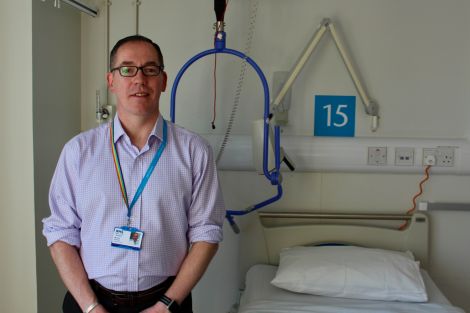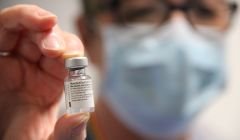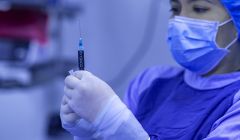Coronavirus / Team in place at health board for return to contact tracing
NHS Shetland has been trialling coronavirus contract tracing as health boards across Scotland prepare to implement a new strategy of Covid-19 testing and tracing.
Local health board chief executive Michael Dickson said: “We are ready to go and the team is in place.”
Scottish first minister Nicola Sturgeon confirmed on Monday that the next phase of the country’s response to coronavirus will see people with symptoms tested before folk they have been in close contact with are traced.
It echoes the strategy first implemented by NHS Shetland when the isles’ first cases were confirmed in early March, but was stopped when the government changed its approach on tackling the pandemic.
There was also not sufficient laboratory capacity in Scotland to continue with the test and trace approach.
With no confirmed cases of Covid-19 in Shetland since 20 April, the health board has not yet needed to start the contract tracing process again.
“We’re ready, and we’ve been trialling our contact tracing processes,” Dickson said on Tuesday.
“We’re ready to go and the team is in place. But we need a positive case to go with it.”
A phone app proposed to speed up the contact tracing process is not yet available.
A test version of an app though is being trialled in the Isle of Wight, with Dickson saying there are “real opportunities” for Shetland to learn from the English island.
“But it’s not just the app that’s the solution – it’s about having a whole approach to Covid-19,” he stressed.
“I think it’s a string to the bow of the wider orchestra we need to overcome this.”
The health chief also confirmed that NHS Shetland may look to tap into staff in the dental department for instance, which is currently only offering emergency treatment, to help with contact tracing.
Become a member of Shetland News
“This is always a moving picture – it might start with an immediate team, then we might go to a permanent team,” he said.
Under the new test, trace and isolate strategy – which Dickson believes could last for up to three years – Shetland’s on-island testing equipment will generally be used for priority cases such as those who may need to travel south for treatment.
Cases which are not as “time critical”, such as testing of keyworkers, will see samples sent to Glasgow for processing to increase the amount of testing capacity.
Airline Loganair, though, is only running a minimal skeleton service which does not go further than Aberdeen.
“We’re in a really good place to be able to expand our testing, we’ve just got to overcome the logistics of getting the samples to Glasgow,” Dickson said.
When asked if he felt Shetland should have returned to the test, trace and isolate strategy sooner, Dickson said that in a pandemic contact tracing was always going to be phased out as the virus spread.
“I think we can always look back, and always must look back, and go ‘can we have done things differently and better’?” he said.
“There will always be things that we can learn from and improve for next time, but I think we’ve done a superb job.
“We’ve been led by the right things, which is the science, rather than necessarily the political triggers.”
Become a member of Shetland News
Shetland News is asking its readers to consider paying for membership to get additional perks:
- Removal of third-party ads;
- Bookmark posts to read later;
- Exclusive curated weekly newsletter;
- Hide membership messages;
- Comments open for discussion.
If you appreciate what we do and feel strongly about impartial local journalism, then please become a member of Shetland News by either making a single payment, or setting up a monthly, quarterly or yearly subscription.





































































